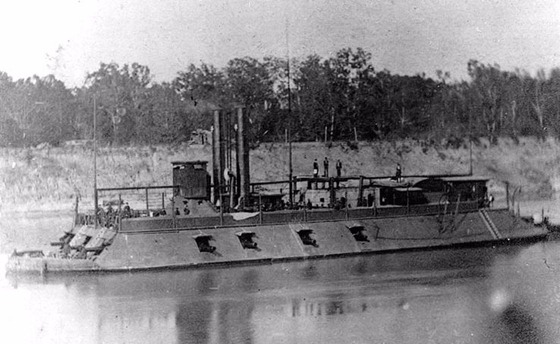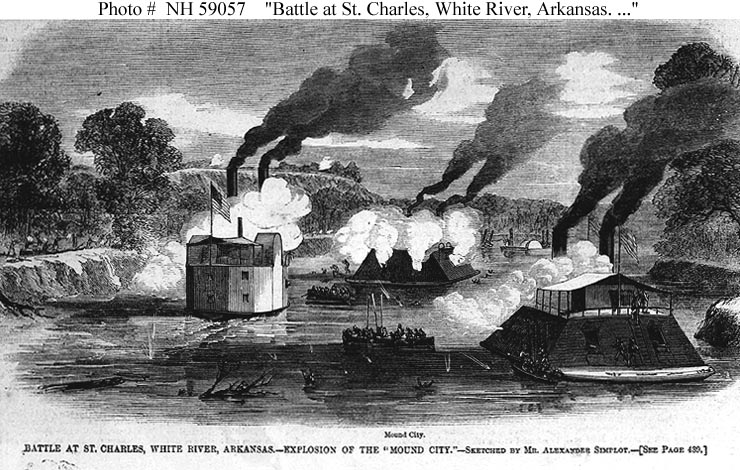From Wikipedia:
(In June 1862), the (Federal) Army of the Southwest under Major General Samuel R. Curtis had been operating in the interior of Arkansas. Curtis believed that Confederate forces of the Trans-Mississippi Department were gathering to attack him. Fearing that he would be cut off, he requested that communications be established between his army and that on the Mississippi River. Either the Arkansas River or the White River would have served his purposes, but the Arkansas was too low for water transport, so an expedition was sent up the White River with intent to give Curtis the aid he had asked for. A single regiment, the 46th Indiana Volunteers, embarked in army transports; they were accompanied by two armored gunboats, Mound City and St. Louis, two unarmored gunboats, and an armed tug. On 13 June, the expedition entered the White River and proceeded uneventfully upstream for four more days.
With intent only to slow down the progress of the Union vessels and not to make a determined stand, the Confederates had set up a pair of batteries on the bluffs near St. Charles, Arkansas, some 80 miles (130 km) above the river mouth. The guns were taken from a gunboat which they had then scuttled in the middle of the stream as a further impediment. On 18 17 June, the Federal flotilla arrived at that point; the soldiers went ashore to attack the batteries from the land side, while the two armored gunboats came up the river, Mound City leading. Shots were exchanged between the gunboats and the shore batteries, with nothing exceptional until a chance shot from the upper battery happened to penetrate the casemate of the lead gunboat. The shot killed some men in its passage, but most of the damage it caused occurred when it hit the vessel’s steam drum. Hot steam immediately filled the entire boat, killing and scalding most of the crew. Those who could do so jumped overboard into the river, where Rebel sharpshooters shot them as they tried to swim to safety. By the time the carnage was over, 125 men were dead by the first shot, scalding, drowning, or being shot in the water. An additional 25 were injured by the steam. Among the wounded was Commander Kilty, who survived and later returned to service in the Navy, although he lost his left arm. Only 25 men of the entire crew escaped without major injury. Meanwhile, the soldiers had moved into position to assault the batteries, so the Confederates fled, leaving their wounded and their guns behind.
Despite the almost complete loss of her crew, Mound City had suffered only inconsequential damage that could soon be repaired. First Master John A. Duble of the gunboat Conestoga took temporary command in place of Commander Kilty. Replacements for the crew were taken from other vessels in the expedition, and they went on for another 65 miles (105 km). They then turned back without meeting the Army of the Southwest. Soon enough Curtis was able to move his army to Helena, Arkansas, where he was able to reestablish his communications without the support of the Gunboat Flotilla.
From Department of the Navy Naval History Center:
This action between Federal gunboats and Confederate shore batteries took place on 17 June 1862. USS Mound City was disabled by a shot that penetrated her steam drum, causing heavy casualties among her crew. Other U.S. ships present were the ironclad Saint Louis (seen in the right foreground) and “timberclads” Lexington and Conestoga. The gunboat in left center is one of the “timberclads.”




